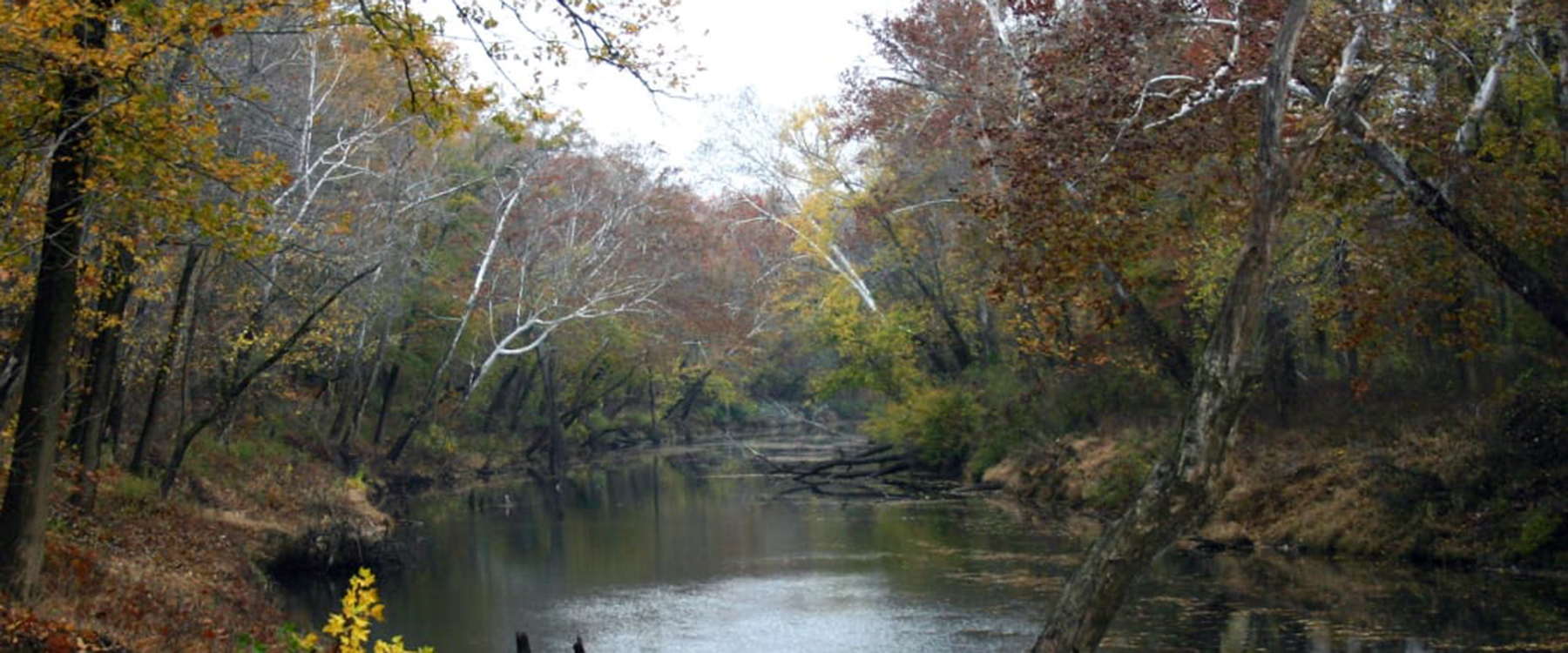Second only to Alaska in the amount of rushing water available to paddlers, Kentucky is a paradise for kayakers, canoeists, and paddleboarders. The state is home to some of the planet’s most epic stretches of whitewater, but the western corner of Kentucky harbors waters of a different, slower pace. The landscape of Jackson Purchase area of western Kentucky offers a mosaic of wetlands inundated with wildlife-loaded swamps and sloughs, shaded by groves of water-logged bald cypress and tupelo—ecosystems that are exceptionally rare in the Southeast.
Once at the edge of the Gulf of Mexico, the waterways of the Jackson Purchase have more in common with the backwaters of Louisiana than the rest of Kentucky, and feature some of the most preciously scarce habitats in North America. The unspoiled and unfrequented swamps and sloughs have a primordial, prehistoric vibe where you can expect to spot tons of birds and maybe a white-tailed deer hiding among the trees or a river otter floating alongside you in the water.
So load up the boat, grab the birding binoculars, and hit the beautiful backwaters of western Kentucky (just don’t forget the bug spray!).
Clarks River National Refuge

The only national wildlife refuge in the Bluegrass state, the 8,000-plus acre Clarks River National Wildlife Refuge sprawls over the East Fork of the Clarks River, named for Revolutionary War commander George Rogers Clark. One of the only waterways in western Kentucky to escape being dammed or channeled by human hands, the wildlife refuge also protects one of the largest areas of bottomland hardwood forest remaining in the Southeast.
The protected area is sure to have bird lovers drooling, as the refuge is home to everything from more common songbirds to rare, bucket-list worthy species, like cerulean warblers, indigo buntings, and Acadian flycatchers. Between the permanent residents and migratory visitors, the refuge has about 200 different species of birds at any given time.
Plucky paddlers also have the opportunity to spot frolicsome families of river otters along the cypress and willow-fringed waterway. One of Kentucky’s most stunning Blue Water Trails, the ribbon of river enshrined in the wildlife refuge has the best access for recreational paddlers. If you’re an experienced paddler, the four-mile section between Tucker Lane and Milliken Mill Lane is a good challenge. You’ll have to portage several logjams, but it’s the best way to experience the bottomland hardwood ecosystem firsthand. The put-in for this one is at Tucker Lane off KY 795 (also called Scale Road) and the take-out is at the bridge on Milliken Mill Lane off KY 795.
After a stint on the Clarks River, you can easily tack on a trip to one of the Kentucky’s premier flatwater paddling destinations—the 170,000-acre Land Between the Lakes National Recreation Area. Wedged between Kentucky Lake and Lake Barkley, this area has nearly 300 miles of pristine shoreline to explore.
Ballard Wildlife Management Area

Tucked away in northwestern Kentucky, not far from the confluence of the iconic Mississippi and Ohio Rivers, the state’s Ballard Wildlife Management Area is a wildlife-loaded wonderland for paddlers. The massive 8,400-acre protected area features a landscape dappled with bogs, sloughs, and at least 15 oxbow lakes—all teeming with life. The area is a critical hotspot for migrating waterfowl and neotropical songbirds, attracting species like white pelicans, bald eagles, wood ducks, scarlet tanagers, and Kentucky warblers. Plus, the backwater is also rife with reptiles and amphibians, including a dozen different types of snakes and a dozen species of turtles.
The Beaver Dam Slough is the protected area’s most expansive stretch of water. The watery landscape flecked with yellow-tinged lotus flowers and stands of bald cypress and tupelo is a quintessential hardwood bottomland. Off the water, yellow-breasted Dickcissels dip over a native grass prairie that fringes the swamps and sloughs, showcasing a landscape which has almost vanished from Kentucky. Despite the expansive acreage, much of the Ballard Wildlife Management Area’s waters are so close they are almost conjoined, which means you can explore the vast wetland with minimal portaging.
Bayou du Chien
Reminiscent of the iconic, foliage-draped waterways of Louisiana, the sluggish Bayou du Chien is an anomaly in Kentucky. Located more than 500 miles north of Louisiana’s waterlogged bayou country, the Bayou du Chien meanders through three counties in western Kentucky, eventually emptying into the Mississippi River. Translated from French as ‘creek of the dog,’ the origins of the Bayou du Chien’s name are murky, but local historians have speculated the slow-moving waterway could have been named when French explorers Louis Joliet and Jacques Marquette stumbled on the stream when scouting the Mississippi.
The bayou is also steeped in local history—dredged and reshaped by settlers, the waterway was a particularly vital commerce artery in the 19th century, ferrying goods and passengers from locations in western Kentucky to the Mighty Mississippi. Today, nature has again taken over the bayou, offering a paddle route peppered with towering bald cypress trees.
The headwaters of the channel also support one of the rarest species on the planet—the relict darter. This federally endangered, endemic, and exceedingly rare fish is found in no place on the planet except in the waters of the Bayou du Chien.
Bob Sehlinger and Johnny Molloy – authors of Canoeing and Kayaking Kentucky – recommend paddling the fauna-rich stretch of the bayou between KY 307 and KY 239 in Hickman County.
The next time you’re looking for a unique paddling trip filled with otherworldly landscapes and plenty of wildlife, take a trip to western Kentucky. You won’t be disappointed.
Written by Malee Baker Oot for RootsRated in partnership with Kentucky Tourism and legally licensed through the Matcha publisher network. Please direct all licensing questions to legal@getmatcha.com.


Comments